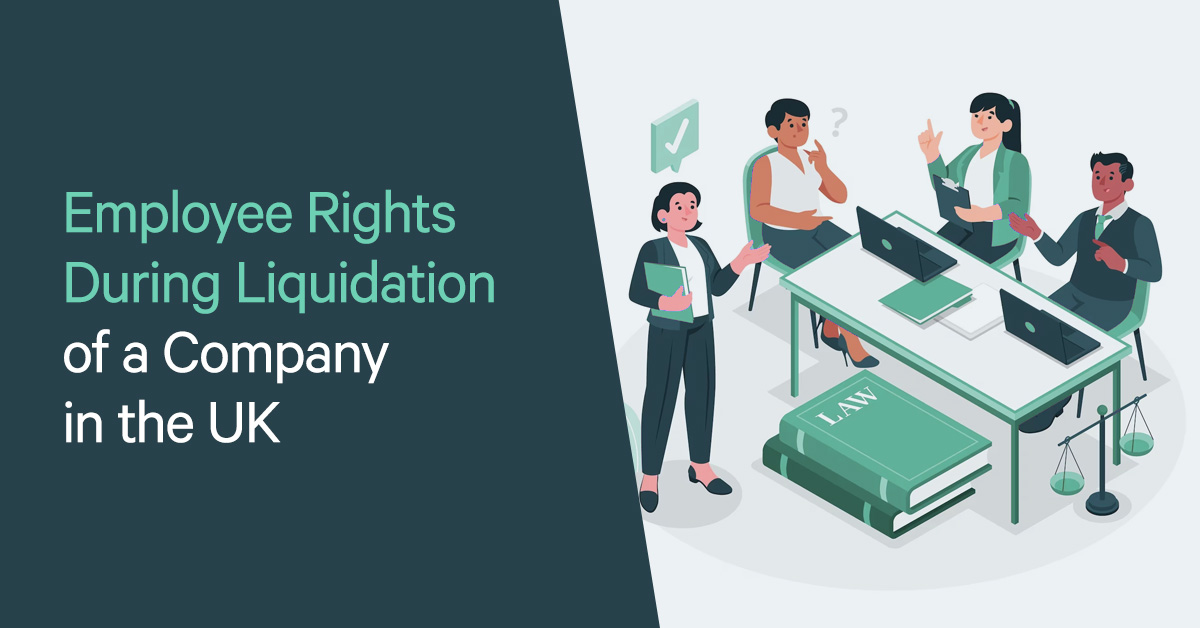Understanding the Fate of Administration Staff in Liquidation: Do Employees Get Paid and What Regarding Redundancy?
Understanding the Fate of Administration Staff in Liquidation: Do Employees Get Paid and What Regarding Redundancy?
Blog Article
Understanding the Consequences of Business Liquidation on Employee Retention and Benefits

Influence On Job Safety
In the occasion of firm liquidation, the influence on task safety and security can be considerable for employees as unpredictability concerning future employment occurs. When a company enters into liquidation, employees encounter the difficult prospect of potential task loss. This uncertainty can lead to enhanced stress and anxiety and anxiousness among the labor force, affecting their spirits and efficiency.
During the liquidation procedure, workers might experience a variety of emotions, consisting of temper, irritation, and worry, as they face the possibility of joblessness. The absence of clearness bordering the timeline of the liquidation and the destiny of their settings can develop a sense of instability within the labor force.
Moreover, staff members may additionally be concerned regarding the status of their benefits, such as medical care protection, retired life plans, and paid time off, throughout and after the liquidation procedure. The prospective loss of these benefits adds an additional layer of intricacy to an already difficult scenario for workers.
Modifications in Worker Benefits

One common adjustment is the decrease or removal of certain benefits to cut costs and resolve arrearages. For example, company contributions to retirement strategies might cease, leaving workers to take on the full responsibility of saving for their future. Moreover, medical care advantages might be downsized, resulting in greater out-of-pocket costs for clinical services.
Interaction ends up being critical during this period of transition. Employers must be transparent regarding the modifications, offering clear descriptions and support to help workers navigate with the alterations. Open up dialogue and assistance can help reduce anxiousness and uncertainty among the labor force, cultivating a much more favorable transition experience in spite of the challenging circumstances.
Retention Methods Post-Liquidation
Complying with the business liquidation, carrying out reliable retention approaches is vital to guarding business ability and preserving security within the labor force. In times of unpredictability, workers might feel anxious regarding their future work safety and be much more likely to look for alternative employment possibility. To reduce this risk, business ought to focus on open communication, providing openness pertaining to the company's circumstance, and offering support to employees throughout the transition duration.
One secret retention technique post-liquidation is to prioritize worker well-being and morale. This can be accomplished with regular check-ins, counseling solutions, and developing a positive workplace. In addition, using profession advancement opportunities and upskilling programs can enhance worker motivation and involvement throughout challenging times. Identifying and awarding employees for their commitment and commitment can also foster a sense of commitment and dedication to the company.
Furthermore, developing a clear career progression path and establishing reasonable goals can offer employees a sense of instructions and function within the company (do employees get paid when company goes into liquidation). By buying staff member development and proactively involving them in decision-making processes, companies can increase worker retention prices and construct a durable labor force post-liquidation
Legal Rights and Securities
During the after-effects of business liquidation, it is crucial to address the legal rights and protections available to workers to make certain a compliant and fair process. It is critical for employees to understand these civil liberties and look for lawful recommendations if needed to navigate the complexities of the liquidation procedure.
In addition, in situations where a firm goes into liquidation, workers are commonly thought about special creditors, providing have a peek at this website them greater top priority in getting exceptional payments over various other creditors. This protection helps focus on working out employee insurance claims prior to other economic responsibilities are fulfilled. Legal safeguards exist to stop unreasonable terminations during liquidation, guaranteeing that discontinuations are brought out according to developed labor laws. Recognizing these lawful civil liberties and securities is basic for workers to guard their interests and look for ideal recourse in case of firm liquidation.
Dealing With Financial Uncertainty
Browsing monetary unpredictability can be a get redirected here difficult obstacle for employees affected by firm liquidation. During such times, it is vital for workers to analyze their current financial situation genuinely.
It is important for workers to stay informed concerning their privileges, such as severance plans or superior settlements, to ensure they receive what they are owed. By proactively addressing economic obstacles, staff members can navigate through the unpredictability triggered by company liquidation with higher resilience and readiness.
Conclusion
In conclusion, firm liquidation can have significant implications on worker work security, benefits, and overall wellness. Comprehending lawful civil liberties and protections can help reduce the effect of liquidation on staff members.
When a firm encounters liquidation, the fate of its workers hangs in the balance, increasing crucial questions about job safety and security, advantages, and lasting stability. The effect of company liquidation on employee retention and advantages is a diverse problem that requires a closer examination to understand the full i loved this scope of its effects.
Navigating economic uncertainty can be an overwhelming obstacle for employees influenced by company liquidation. By proactively addressing monetary challenges, workers can navigate with the unpredictability triggered by firm liquidation with greater strength and preparedness.

Report this page